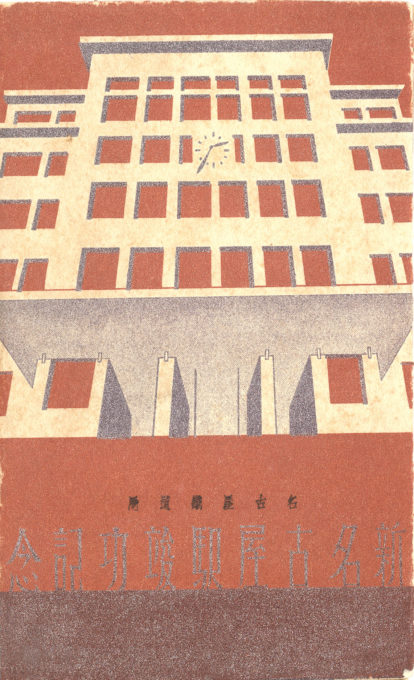
Nagoya Station, Nagoya, 1937, commemorating the opening of the third terminal to display the railway station name fifty-one years after the original terminal opened. Wartime firebombing would reduce this five-story terminal to a hulk. Repaired and reconstructed after the war, it would be replaced in 1971 by a 20-story tower that included two floors for a bus terminal. This terminal would, in turn, be replaced in 2000 by twin 50+ story towers.
See also:
Pan-Pacific Peace Exposition, Nagoya, 1937.
Nagoya Castle, Nagoya, c. 1910.
“In 1886, Nagoya Station was opened in Sasashima, an area which used to be a swamp and rice field. In 1889, the Tokaido Line was opened from Shimbashi Station in Tokyo to Kobe Station. At the time of its opening, there were four direct trains a day between Shimbashi and Kobe, and the journey took about 20 hours.
“In 1891, the Nobi Earthquake occurred. The station building collapsed, and was rebuilt the following year. In 1895, the predecessor of the Kansai Main Line, the private railroad Kansai Railway, entered Nagoya Station. Nagoya Station has grown into a terminal station with multiple train lines. In 1898, Japan’s second streetcar system began operating, following the one in Kyoto. Nagoya Station and the prefectural government were connected by streetcar.
“In the mid Taisho era, the number of visitors reached 2 million a year, and by the end of the Taisho era had doubled to 4 million persons. The number of train arrivals and departures exceeded 100 per day by the end of the Taisho era. Cargo to and from Nagoya Station also increased from 140,000 tons per year in 1900 to over 1 million tons per year by the end of the Taisho era.
“This combination of passenger and freight service approached saturation, making a strong demand for the construction of a new station. In 1934, Nagoya’s population surpassed one million. To commemorate this event, the Nagoya Pan-Pacific Exposition was to be held in 1937. Various infrastructural improvements were made in preparation for the exposition. In February 1937, the third Nagoya Station was completed at its present location.”
– Wikipedia



